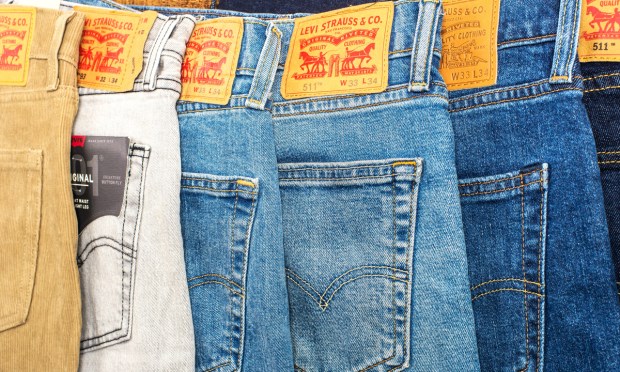Levi’s Cuts Prices as Consumers Cut Spending

The story of consumer cutbacks on discretionary items, like apparel and beauty products, continues. But a new narrative is starting to emerge, as brands and retailers demonstrate a willingness to reevaluate their prices to align with changing consumer expectations.
For example, Target’s quarterly earnings confirmed many investors’ concerns, as comparable digital sales fell 3.4%. This drop was attributed to consumers pulling back on discretionary purchases.
Similarly, Macy’s faced revenue challenges in the first quarter of 2023. Brick-and-mortar sales fell 6% year-over-year and digital sales fell 8%. As a result, Macy’s revised its annual sales and profit forecasts down, citing inflation-induced demand deceleration as the primary factor.
These earnings results are not unexpected. PYMNTS’ May “Consumer Inflation Sentiment” report revealed that consumers are reducing their spending in two categories: clothing and accessories, health and beauty. These are bread and butter for Macy’s and Target. Over one-third of consumers are prioritizing lower prices in these product categories, rather than brand.
Read more: Apparel and Beauty Retailers Slash Prices in Response to Disappointing Earnings
Continuing that narrative is Levi’s, where wholesale revenues fell and sales were sluggish in its biggest market, the U.S. The company not only made a downward revision to its profit forecast on Thursday (July 6) but it also looked to revisit its price offering.
However, Levi’s reported advancements in its direct-to-consumer (D2C) sales and the Chinese market.
In the quarter, Levi’s reported net revenues of $1.3 billion, a 9% decline year over year, both on a reported and constant-currency bases. Levi’s disclosed a net loss of $1.6 million during this period.
Direct-to-Consumer Initiatives
On a positive note, D2C net revenues grew 13% on a reported basis and 14% on a constant-currency basis.
“Our strong Q2 D2C and international results in a challenging environment demonstrate the resilience of our business model and the health of the Levi’s brand globally,” said Chip Bergh, president and chief executive officer of Levi Strauss & Co in a statement. “While U.S. wholesale remains pressured, we are pursuing initiatives to stabilize this business and drive market share gains. We are confident in our ability to navigate near-term headwinds and remain as optimistic as ever about the company’s future.”
The growth was primarily fueled by the expansion of Levi’s company-operated main stores and outlet stores, along with its eCommerce sector. The eCommerce division achieved a reported basis growth of 20% and a constant-currency basis growth of 21%.
Wholesale Efforts
When Bergh joined Levi about 12 years ago, wholesale partners such as Macy’s and Kohl’s accounted for more than 40% of the company’s overall business. It has declined to less than 30%.
While wholesale represents a smaller portion of Levi’s sales, the decrease in wholesale revenue had an impact on Levi’s sales. Bergh attributed the decline in wholesale revenue to two factors. First, there has been a consumer slowdown affecting the entire retail industry. Second, internal issues at Levi’s, such as stock shortages, have contributed to the decline.
Bergh further acknowledged that Levi’s has been grappling with high levels of inventory, which has resulted in congestion at its distribution centers.
Although Asia and Latin America witnessed growth, this was offset by declines in North America and Europe. When adjusted for the shift in wholesale shipments from the second quarter to the first quarter, global wholesale net revenues fell by the low-double-digits, despite a nearly 20% constant-currency growth in the previous year. Overall, global wholesale net revenues in the first half of the year increased by a modest low-single-digit percentage compared to 2019.
Levi’s Price Comparison
The company has outlined its plans to cut prices on about six of its more price-sensitive items, including popular 502 and 512 jeans. However, these price adjustments are expected to impact profits in the upcoming quarters. While the jeans will be reduced from $79.50 to $69.50, that is still higher than their pre-pandemic $59.50, as highlighted by Bergh.
According to Bergh in an interview with CNBC, Levi’s raised its prices in relation to competitors to a level that hindered further market share growth. In an effort to address this, the company plans to narrow the price gap with competitors and return it to historical levels through a $10 rollback.
Bergh emphasized that the price reduction will be limited to stores where Levi has wholesale partnerships, such as Macy’s, and will not be implemented in the company-owned stores or internationally.
Levi is also preparing for a higher tax rate in the second half of the year, which has contributed to the lower outlook. During the quarter, the company’s effective tax rate stood at 78.4%, compared to 36.1% in the same period the previous year.

